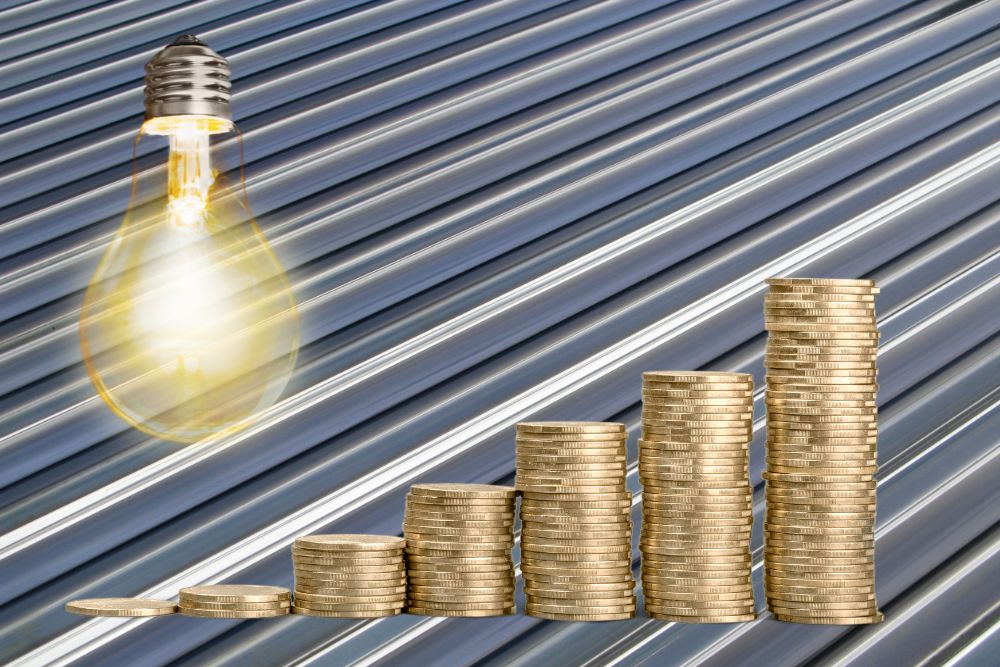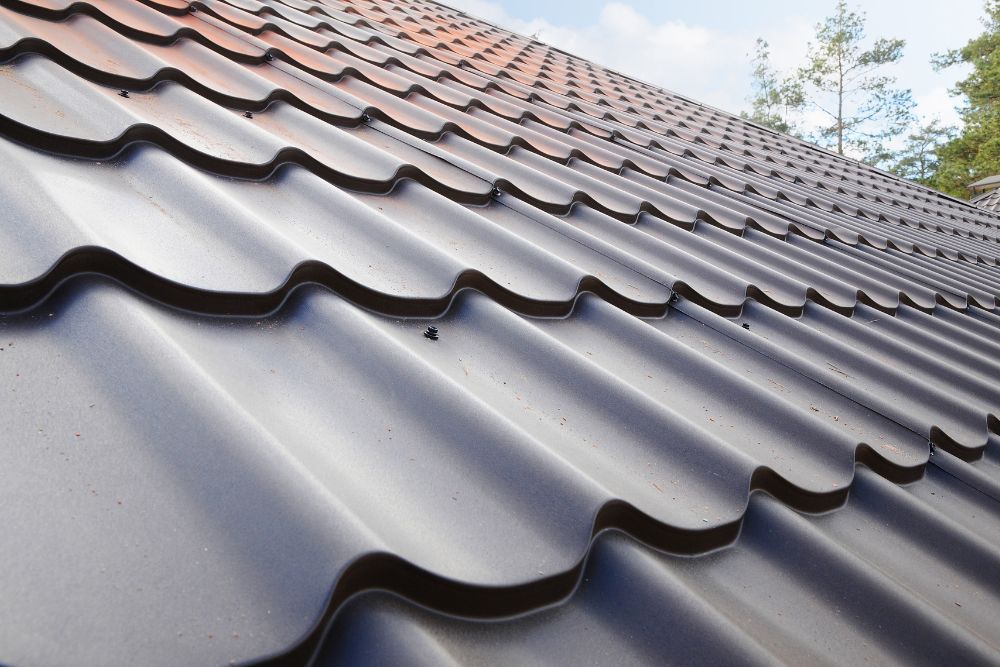Did you know that homeowners have reported up to 25% savings on their energy bills after switching to a metal roof? That’s right! Metal roofs not only offer durability but also provide significant reductions in energy costs. But how do they achieve such impressive savings? Let’s dive into the science behind it.
Energy Efficiency of Metal Roofs
Metal roofs are highly reflective, meaning they can bounce back up to 70% of the sun’s energy. This makes them much cooler than traditional asphalt shingles and can lead to significant energy savings. In fact, metal roofs can be up to 100 degrees cooler on the surface, which reduces the need for excessive cooling in warmer climates.
One reason metal roofs are so energy-efficient is their ability to effectively manage heat absorption. By reflecting the sun’s rays, metal roofs prevent excess heat from entering the building, resulting in enhanced energy savings. Proper ventilation is also important for energy efficiency. Well-ventilated metal roofing systems allow hot air to escape, which promotes cooler air circulation and helps maintain a comfortable indoor environment. This, in turn, reduces energy consumption.
Benefits of Metal Roof Energy Savings
Metal roofs offer significant energy savings compared to traditional roofing materials. They reflect the sun’s UV and infrared rays, reducing heat absorption and keeping your home cooler. This efficient heat management lowers energy consumption and creates a more comfortable indoor environment.
The reflective properties of metal roofs also decrease the need for excessive air conditioning, cutting down on utility expenses. By investing in a metal roof, you can save money on energy bills and contribute to a greener environment. Plus, metal roofs are recyclable, making them a sustainable choice for homeowners looking to reduce their carbon footprint.
Factors Influencing Metal Roof Energy Efficiency
To make your metal roof more energy efficient, it’s important to understand the factors that impact its performance. Here are the key factors that affect the energy savings potential of your metal roofing:
- Reflectivity: Metal roofs can reflect up to 70% of the sun’s energy, which helps reduce heat absorption and lower cooling costs.
- Thermal Emittance: Metal has a unique atomic structure that results in high thermal emittance, making the roof more energy efficient.
- Ventilation: Proper ventilation in metal roofing systems allows hot air to escape, promoting cooler air flow and contributing to energy savings.
- Heat Absorption: Metal roofs efficiently manage heat absorption through their reflective properties, helping maintain energy efficiency.
- Reflective Properties: Reflectivity, thermal emittance, and ventilation are important factors that collectively influence the energy savings potential of metal roofs.
Calculating Energy Savings With Metal Roofs
When calculating the energy savings potential of a metal roof, it’s important to consider its reflective properties and efficiency compared to traditional roofing materials.
Metal roofs are known for being energy-efficient and can save homeowners around 10-25% on their annual energy costs. The reflective properties of metal roofs play a key role in reducing the amount of heat absorbed by buildings, which in turn leads to lower cooling costs. By reflecting the sun’s UV and infrared rays, metal roofs help decrease overall energy consumption.
Investing in a metal roof not only provides immediate energy savings but also offers long-term benefits, including a reduced environmental impact. To calculate energy savings with metal roofs, you need to compare the initial investment to the lower energy costs over time. This calculation demonstrates the significant cost-effectiveness and eco-friendly advantages that metal roofing can bring to homeowners who want to improve their property’s energy efficiency.
Real-Life Examples of Metal Roof Energy Savings
Metal roofs offer tangible benefits for homeowners looking to enhance their property’s energy efficiency. Here are some real-life examples that highlight the advantages:
- Installing a metal roof with reflective properties can save homeowners up to 25% on annual energy costs.
- When combined with proper ventilation systems, metal roofs can reduce cooling costs by up to 25%, promoting energy efficiency.
- The batten/counter-batten system on metal roofs decreases heat flow by 45%, enhancing overall energy efficiency.
- Metal roofs with solar reflective coatings reflect the sun’s radiation, which is particularly advantageous in warmer climates.
- Real-life examples demonstrate that metal roofs significantly contribute to energy savings and efficiency, leading to lower residential energy costs.
These examples underscore the practical benefits of metal roofing in improving energy efficiency and reducing energy expenses for homeowners.
Conclusion
In summary, opting for a metal roof can result in significant energy savings because of its high reflectivity and ability to keep your home cooler.
By reflecting up to 70% of the sun’s energy, you can enjoy lower cooling expenses and reduced overall energy usage.
Consider the long-term advantages of a metal roof as a more energy-efficient and environmentally conscious choice for your home.



